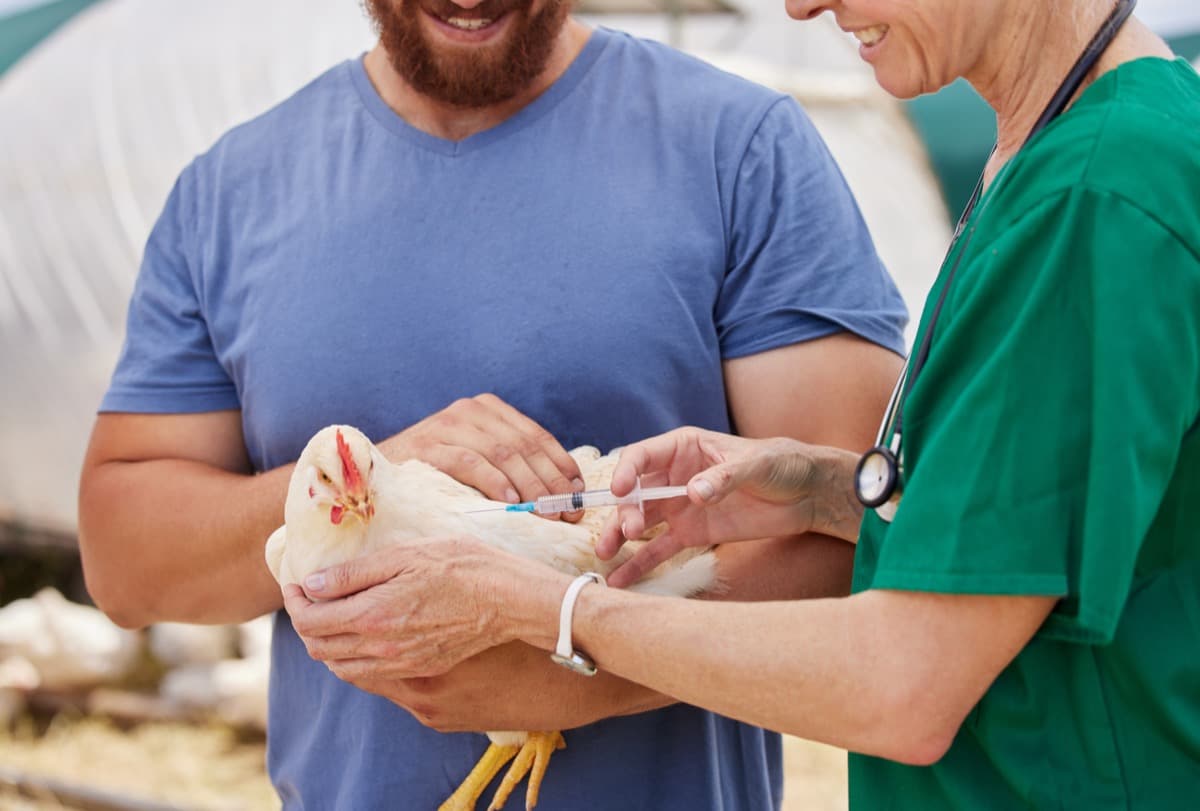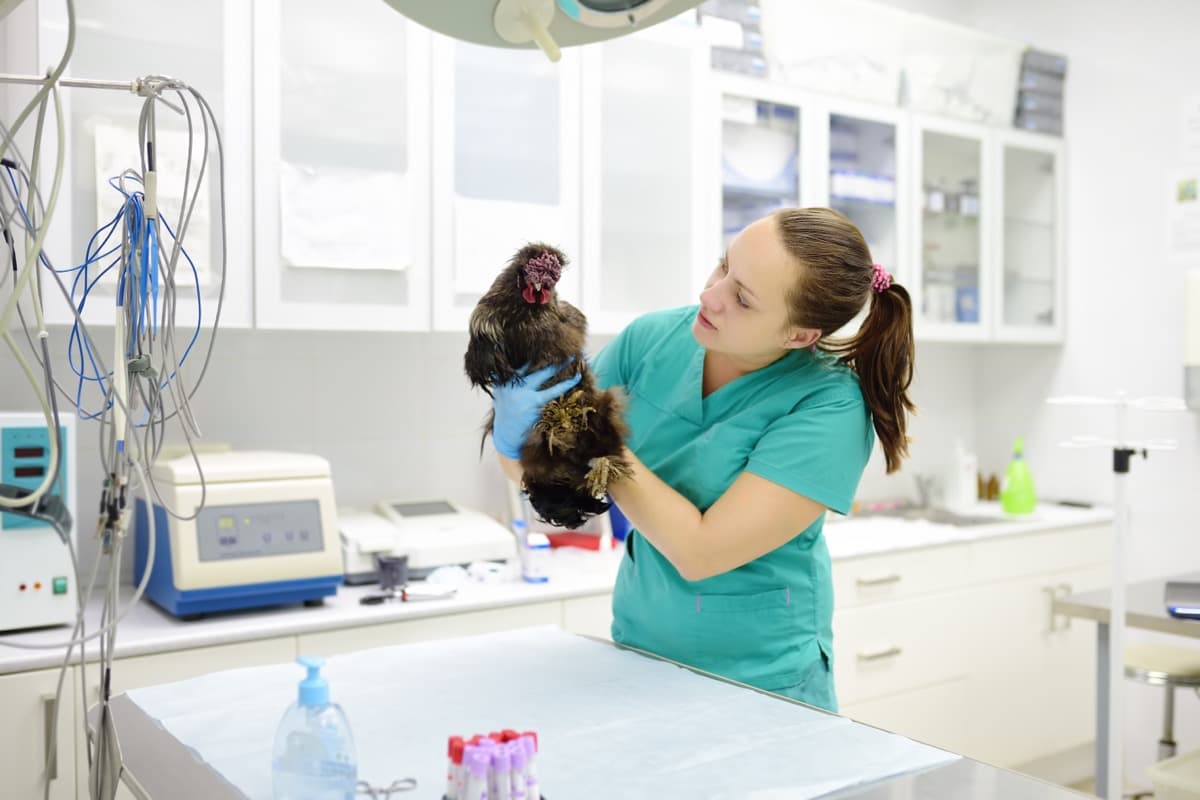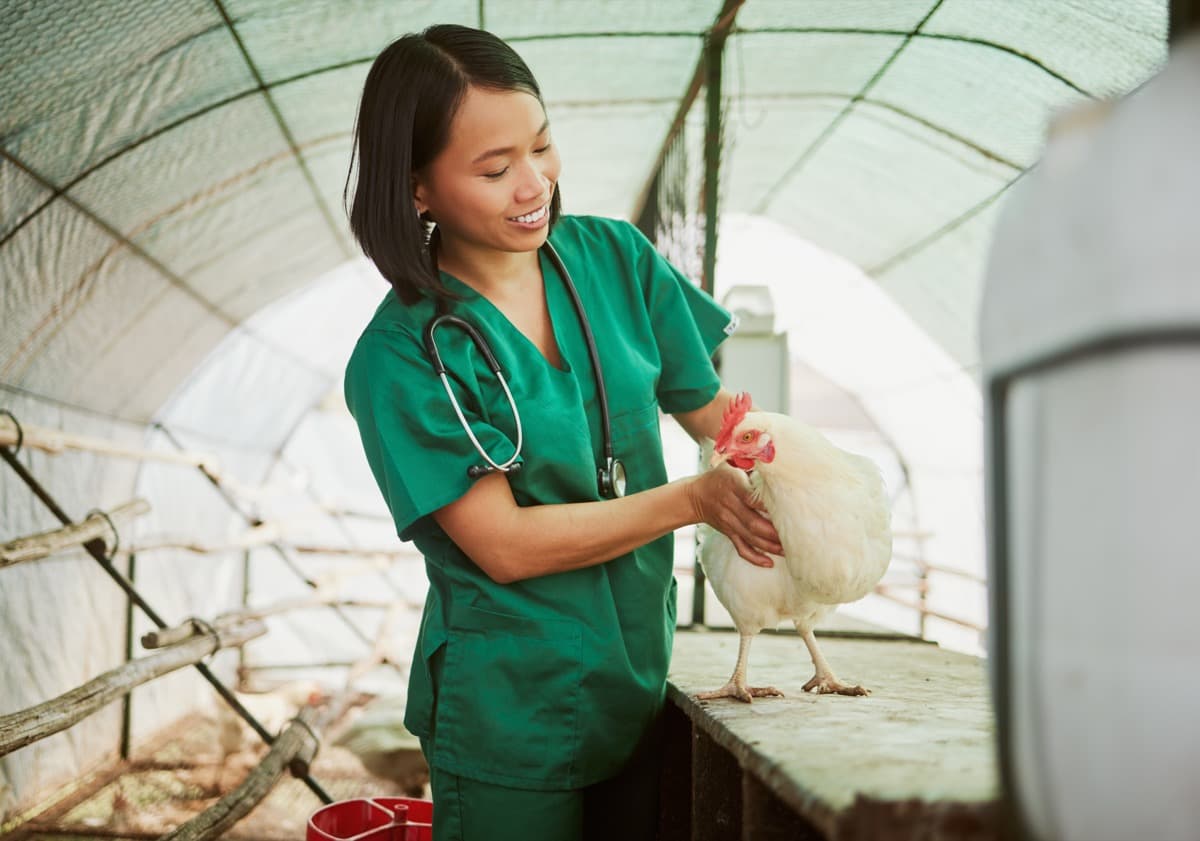Avian Influenza, known as bird flu – is a viral infection caused by the avian Influenza Type A virus. These viruses are naturally found in aquatic birds and can infect domestic poultry and animal species. While some bird species may not become ill from the virus, it is highly contagious and can be deadly to certain domesticated bird species, such as chickens, ducks, and turkeys. With the potential for widespread transmission among bird populations, avian Influenza poses a significant threat to animal health and the economy.

Avian Influenza Management in Chicken
Causes of Avian Influenza Disease
- Influenzavirus, A virus of the family Orthomyxoviridae, causes avian Influenza.
- The virus has several subtypes based on antigenic relationships in the virus glycoproteins haemagglutinin (H) and neuraminidase (N).
- There are 15 recognized H subtypes and nine neuraminidase subtypes. The pathogenicity of the virus also varies, with very virulent strains causing highly pathogenic avian Influenza (HPAI) with high mortality rates.
- In contrast, other strains cause a milder disease known as low pathogenic avian Influenza (LPAI). Certain avian influenza virus subtypes of low pathogenicity may mutate into highly pathogenic virus strains after circulating in a poultry population for some time.
- Although H5 and H7 subtypes have been shown to cause highly pathogenic avian Influenza in susceptible species, not all H5 and H7 viruses are.
Disease cycle of Avian Influenza
- Enters the host cell, entry of viral ribonucleoprotein (vRNP) into the nucleus.
- Transcription and replication of the viral genome.
- Export of vRNP from the nucleus and assembles budding at the host cell plasma membrane.
- Entry of the virus from the host cell by binding to sialic acid on the host cell membrane with the viral membrane’s hemagglutinin (HA).
- The virus is taken up into the host cell by receptor-mediated endocytosis.
- It enters an endosome with a low pH that triggers the fusion of the viral and endosomal membranes.
- The acidic environment also opens up the M2 ion channel, acidifying the viral core and releasing the vRNP from M1, allowing it to enter the host cell’s cytoplasm.
Symptoms of Avian Influenza Disease
- The symptoms of avian Influenza in birds vary depending on whether it is low or highly pathogenic.
- There may be few clinical signs in low pathogenic avian Influenza, but infected flocks may show respiratory distress, diarrhea, and a drop in egg production of more than 5%.
- In highly pathogenic avian Influenza, affected birds may develop swollen heads, blue coloration of the comb and wattles, respiratory distress, diarrhea, and a significant drop in egg production. Mortality can be very high, and the severity of the disease can vary.
- It is important to contact your local animal health office if you suspect your flock has any form of avian Influenza.
In case you missed it: Fowl Pox Management in Chicken: Disease Symptoms, Treatment, Diagnosis, and Prevention

Diagnosis of Avian Influenza in Chicken
Detecting the virus or specific antibodies against it is required to diagnose avian Influenza (AI) in chickens. However, the presence of clinical disease is not enough to confirm a diagnosis.
- In a laboratory, samples are collected from live or dead birds and analyzed. Internal organs and oropharyngeal and cloacal swabs can be used to isolate the virus. In addition, In addition, AI viruses can be detected using hemagglutination inhibition or other immunoassays because they grow well in the allantoic sac of embryonated chicken eggs. Reverse transcriptase PCR can detect viral RNA.
- Serologic tests for AI antibodies, such as AGID or ELISA, are used to confirm infection in birds that have recovered from clinical disease. Hemagglutination and neuraminidase inhibition tests can also be performed to classify the virus by its subtype.
- Differential diagnosis is necessary to distinguish LPAI from other diseases or causes of decreased egg production, such as viral or bacterial infections and fungal diseases. HPAI must be differentiated from other high-mortality conditions, such as virulent Newcastle disease, fowl cholera, heat exhaustion, and severe water deprivation.
Treatment and Control of Avian Influenza Disease
- Exclusion biosecurity strategies that prevent virus introduction are the most effective way to control avian Influenza (AI) in poultry. Outbreaks that are suspected should be reported to the appropriate regulatory authorities.
- Vaccination with antigenically matched and properly administered vaccines can prevent clinical signs and death, significantly reduce virus replication and shedding from the respiratory and gastrointestinal tracts, and may provide partial protection via antibodies to homologous viral neuraminidase antigens.
- Supportive care for AI-affected flocks includes treating with broad-spectrum antibiotics to control secondary pathogens and increasing house temperatures to reduce morbidity and mortality. Treatment with antiviral compounds is not approved or recommended.
Biosecurity Measures to Prevent Avian Influenza Disease in Chickens
- Keep a closed flock: Restrict the entry of new birds or animals to the farm and limit contact with other flocks.
- Control movement of people and vehicles: Only essential personnel and vehicles should be allowed on the farm and properly disinfected before entering and leaving.
- Provide proper clothing and disinfection facilities: Anyone entering the farm should wear clean clothing and footwear and use disinfection facilities to reduce the risk of contamination.
- Control access to feed and water sources: Prevent contact between wild birds and poultry by controlling access to feed and water sources.
- Implement proper sanitation and hygiene practices: Thoroughly clean and disinfect all equipment, facilities, and vehicles to prevent the spread of disease.
- Monitor bird health: Regularly check birds for signs of illness and report any suspected cases to veterinary authorities.
In case you missed it: Coccidiosis Disease Management in Chicken: Symptoms, Treatment, Prevention and Management of Disease

Conclusion
In conclusion, avian Influenza is a highly contagious viral disease of birds that can cause significant economic losses in the poultry industry. The disease can be caused by low-pathogenicity or high-pathogenicity avian influenza viruses, and it can spread rapidly through a flock, leading to high mortality rates. Proper biosecurity measures are essential to prevent the introduction and spread of avian Influenza in poultry flocks.
Early detection and reporting of suspected cases are crucial to prevent further spread. Vaccination and supportive care can also play a role in preventing and controlling avian Influenza in poultry. With proper management and control measures, avian influenza’s impact on the poultry industry can be minimized.
- Types of Fungicides Used in Agriculture
- Common Issues in the Fruit Development Stage of Pomegranate Farming
- Fruit Development Issues in Papaya: Easy Solutions and Treatment
- Soil-Borne Diseases and How to Protect Your Plants
- Practices to Prevent Disease Spread in the Garden
- From Wilted to Thriving: How to Treat Root Rot Naturally in Houseplants
- Natural Remedies to Cure Brown Spots on Fig Tree Leaves
- Natural Solutions for Poinsettia Problems: 100% Effective Remedies
- How to Control Calla Lily Problems: Natural Remedies for Leaf and Flower Problems